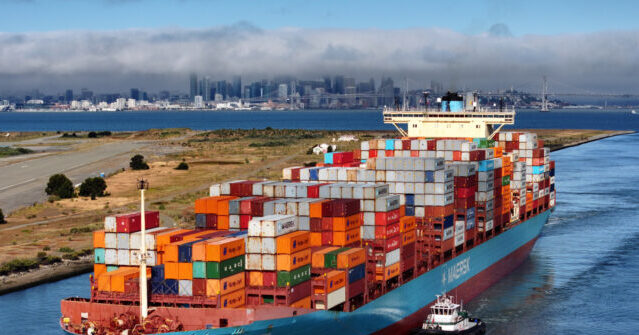The United States is experiencing lower goods inflation than most of its international peers despite a modest recent increase, according to a new analysis from the Council of Economic Advisers that seeks to counter claims that trade policies are fueling higher prices.
The report, released as concerns mount over a slight uptick in core goods inflation, places recent U.S. price trends in global context and suggests that international factors, rather than domestic trade policies, are driving the increases.
Core goods inflation — which excludes volatile food and energy prices — has risen to 1.2 percent over the 12 months through July, with a 1.1 percent annualized rate since January. While some analysts have attributed this increase to trade policy changes, the White House economists argue the data tells a different story.
“Core goods inflation has increased globally over the past 12 months,” the analysis states, noting similar patterns across European and North American economies including Canada, Mexico, the United Kingdom, and the European Union.
The report’s central finding is that U.S. goods inflation not only remains at historically low levels but is performing better than would be expected based on global trends.
The director of the Council of Economic Advisers, Stephen Miran, testified on Capitol Hill on Thursday as the Senate considers his nomination to a short-term appointment as a Federal Reserve Governor.
“There is no evidence that tariffs have had any inflationary effect” Miran told the Senate Banking Committee.
Using a regression model that analyzes inflation patterns across peer countries over the past decade, the economists predicted U.S. core goods prices should have increased by about 0.7 percent from January to July. The actual increase was just 0.55 percent.
“There is no indication that U.S. goods inflation is substantially higher than what would be expected given the level of goods inflation in other countries,” the report concludes.
The analysis comes as policymakers and economists debate the inflationary effects of various trade measures. Critics have pointed to the recent uptick in goods prices as evidence that trade policies are beginning to show up in consumer prices, while supporters argue that other global factors are responsible.
The White House analysis specifically examined import-intensive categories of goods, finding they have had “larger price declines since January” compared to overall goods. When economists calculated the import contribution to core goods inflation — essentially measuring how much price changes in imported goods affect overall inflation — they found it tracked closely with overall core goods inflation patterns.
Among the countries examined, the United States currently has lower durable goods inflation than Canada and similar levels to the United Kingdom, despite all countries showing increases over the past year. Only the European Union has maintained stable core goods inflation over the recent period.
The report acknowledges limitations in its methodology, noting that “much of the variation in U.S. monthly inflation cannot be explained by the monthly inflation from other countries.” However, the economists argue this uncertainty cuts both ways and does not support claims that trade policies are driving unusual price increases.
Overall U.S. inflation has continued to moderate, with headline Consumer Price Index increasing at a 1.9 percent annualized rate from January through July. This reflects a broader shift in the composition of inflation, with goods price increases being more than offset by declines in services inflation.
The timing of the analysis suggests the White House is eager to frame inflation trends in the most favorable light possible, particularly as any sustained increase in goods prices could complicate broader economic messaging. The administration has consistently argued that its economic policies are helping to bring down inflation while maintaining strong growth.
For consumers, the report suggests that recent increases in goods prices reflect global economic conditions rather than policy-specific factors, though economists caution that inflation patterns can shift quickly based on various domestic and international developments.
The Council of Economic Advisers concluded its analysis with a standard economic disclaimer: “absence of evidence is not evidence of absence,” while maintaining that current data shows “the lack of evidence that tariffs are leading to higher goods inflation.”
Read the full article here
